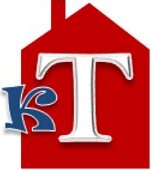What Type of Property are you Looking for?
How Janesville’s Rental Market Is Adapting to Remote Work Trends
As the landscape of work continues to evolve, the rental market across the United States is experiencing significant shifts. In cities like Janesville, Wisconsin, the emergence of remote work has prompted changes in how properties are marketed, utilized, and valued. This adaptation reflects broader trends that have implications for both landlords and tenants.
A Shift in Demand
Historically, Janesville’s rental market has catered primarily to local workers and the traditional housing needs tied to manufacturing and industrial jobs. However, the COVID-19 pandemic accelerated the acceptance of remote work, leading to a surge in demand for rental properties as individuals and families reassess their living conditions.
Remote work has allowed many employees to relocate, seeking more spacious accommodations or moving to areas with a lower cost of living. Janesville, known for its charming neighborhoods and proximity to larger cities like Madison and Milwaukee, is emerging as an attractive option for these new remote workers. This has resulted in increased interest in single-family homes, townhomes, and larger apartments that offer versatility for home offices and more comfortable living spaces.
Reconfigured Rental Spaces
In response to changing tenant preferences, landlords and property managers in Janesville are beginning to rethink their properties. Many are making modifications to existing rental spaces to better accommodate remote work. Features such as dedicated office spaces, high-speed internet access, and enhanced outdoor areas for relaxation and recreation are becoming increasingly vital.
Some property owners are also opting to furnish units with office equipment or amenities conducive to remote work, tapping into a new segment of renters who value functionality without the need for extensive personal investment. This strategic move not only attracts potential tenants but also enhances rental value in an increasingly competitive market.
Flexible Lease Options
As remote work offers greater flexibility, so too are rental agreements evolving. Many landlords in Janesville are moving towards offering flexible lease terms, accommodating tenants who may require short-term housing solutions or are uncertain about their long-term plans.
This trend has been especially appealing to transplants drawn to the city by remote work but who may wish to explore the area before committing to a more permanent residence. By offering month-to-month options or shorter leases, landlords can entice a broader range of tenants, making Janesville’s rental market more competitive and versatile.
Increased Competition and Price Adjustments
The influx of renters drawn by the remote work trend has resulted in increased competition in Janesville’s rental market. While this demand has led to some upward pressure on rental prices, it has also prompted property owners to be more strategic in setting their rates. Competitive pricing and attractive amenities are critical to standing out in a crowded market.
As a result, we see a new dynamic where both landlords and renters are engaged in a balancing act—landlords work to maintain occupancy rates and attract desirable tenants, while renters seek value for the increased competition. For many, this means negotiating rental terms that reflect the unique circumstances of remote work, including the value of a functional home office space.
Community Considerations
The adaptation of Janesville’s rental market to remote work trends extends beyond individual properties. Community leaders are also paying attention to these shifts, recognizing the need to support this new demographic of residents. This could involve improving local internet infrastructure, supporting the development of co-working spaces, and enhancing community amenities that appeal to remote workers.
Further investment in local businesses that cater to these residents, such as cafes with strong Wi-Fi, wellness centers, and educational facilities, could create a more attractive environment for remote workers looking for a blend of work and lifestyle.
Conclusion
Janesville’s rental market is undergoing a noteworthy transformation driven by the rise of remote work. As the demand for flexible living arrangements increases, property owners and managers are adapting in innovative ways to meet the needs of modern renters. With community support and strategic adjustments, Janesville stands poised to thrive in this new era, ensuring it remains a desirable place to call home for remote workers and families alike. As we look ahead, it will be fascinating to see how these trends continue to evolve and shape the future of the rental landscape in Janesville and beyond.
